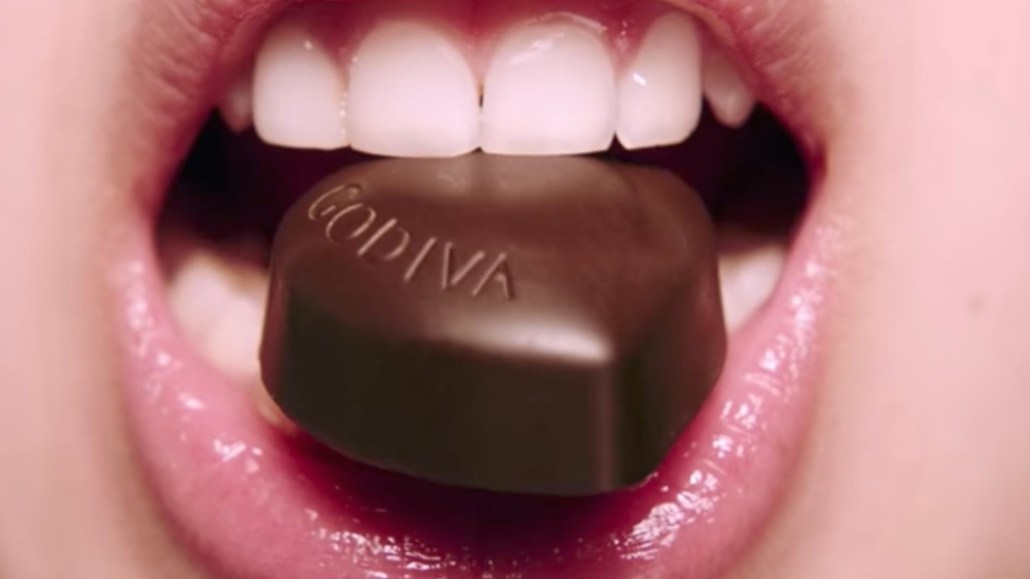Godiva expands its e-commerce push beyond Amazon and department stores

For the past five years, Godiva has sold its chocolates outside its own site only on Amazon and department stores such as Macy’s, Lord & Taylor, JCPenney, Dillard’s, Neiman Marcus and Kohl’s. Now, the company is looking beyond those two businesses to sell online through supermarkets Walmart, Kroger, Target, Publix, Walgreens, Costco, BJ’s and Albertsons. These retailers are in the process of going live with their Godiva product pages.
For this move, Godiva has developed a new line of chocolates that it’s selling specifically on these new channels as well as Amazon. Masterpieces is a line of individually wrapped chocolates and filled chocolate bars and comes with a new branding strategy. Godiva is bringing its most popular chocolates from its 91-year history, such as its dark chocolate hearts, caramel lions and hazelnut oysters, to the line. These speciality chocolates are usually reserved for its boutique shops. Godiva predicts Masterpieces will rake in $20 million in 2018.
“We realize that we needed to have an offering that delivers that same level of quality and excellence to consumers on an everyday basis year-round, as opposed to just the occasions that they are in our shops,” said Brian Blanchard, CEO of Godiva Masterpieces’ parent company Pladis.
Godiva is allotting 90 percent of its overall marketing spend to promote the new Masterpieces collection, with the remainder going to marketing its gifting portfolio around key holidays, Blanchard said. In the fourth quarter alone, the brand is spending $12 million on media, digital and TV for Masterpieces, 65 percent of what the brand plans to spend on the new line in 2018, he said.
“This is the biggest investment that we’ve made in the Godiva brand in probably the last 10 years,” said Blanchard.
Ad position: web_incontent_pos1
The campaign around the new line of chocolates began on Oct. 16 with a TV commercial and will continue throughout the brand’s fourth quarter. The spot and upcoming social campaign is focused on the experience of eating Godiva chocolates.
“It’s all about this idea of how we’re bringing this delicious, indulgent chocolate to the everyday world and making it so consumers now can experience it every day,” said Blanchard.
Ad position: web_incontent_pos2
The budget includes advertising on the new platforms Godiva is selling on. “You have to look at partners like Amazon and Target.com as not just sales channels, but as marketing channels, too,” said Blanchard.
The brand is also adding media partners to its marketing for the first time, including publishers such as PopSugar, Thrillist, SheKnows and CafeMom around integrated content. Godiva is also working directly with mom bloggers and food and lifestyle influencers, whom the brand deems as more relatable on a personal level than chefs, a common influencer type for food brands. “It’s all about taking this artistic and crafted chocolate and making it accessible to people,” said Blanchard. “A focus on chefs seems to be counter to that purpose.”
With the campaign and new line of chocolates, Godiva hopes it can become the second-largest brand in the premium chocolate space in the world. “We know we can be much bigger,” said Blanchard.
More in Marketing

In the marketing world, anime is following in the footsteps of gaming
As marketers look to take advantage of anime’s entry into the zeitgeist, they might be wise to observe the parallels between the evolution of anime as a marketing channel and the ways brands have learned to better leverage gaming in recent years.

With the introduction of video ads and e-commerce, Roblox looks to attain platform status
Roblox is expanding into more areas than just ads in 2024. Much like platforms such as Amazon and Facebook have transcended their origins to evolve from their origins as online marketplaces and social media channels, Roblox is in the midst of a transformation into a platform for all elements of users’ virtual lives.

PepsiCo wants to remain a ‘driver of culture’ as it turns to influencers and activations amid rebrand
The soda-maker says it can translate cultural relevance into sales volume.
Ad position: web_bfu